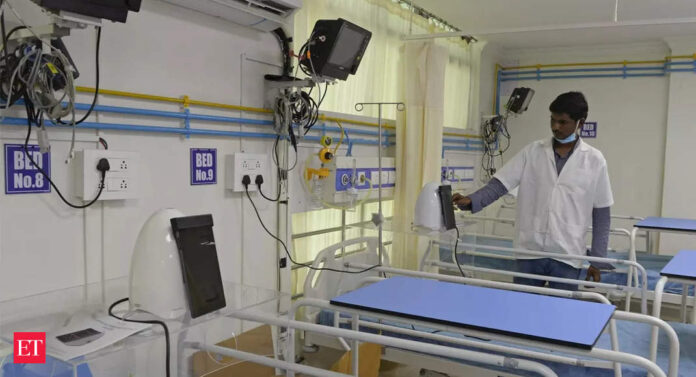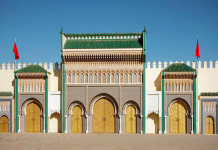Global tourism is taking flight again. With the pandemic waning, reports about airport chaos have surfaced in the US and Europe, confirming an abrupt rise in international air travel even as hard data on tourist arrivals are only trickling in.
This extraordinary travel boom, propelled by over two years of Covid uncertainty, will likely last longer, according to experts and officials. So it would be natural for Indian tourism to hope to ride this wave by coining a new slogan or two, or packaging a handful of tried and trusted destinations for a travel-hungry global audience.
What is unusual though is that this time, the Government of India (GoI) has picked a niche: it is now focusing more on medical tourism, a segment valued at $60-80 billion globally. This figure is based on an estimate of about 14 million medical tourists who cross the borders every year, according to a strategy paper published by India’s tourism ministry in January. The size and scale of wellness tourism is even larger — about $639 billion, according to estimates of Global Wellness Institute in 2017 as quoted in the same paper.
With this backdrop, GoI has been putting finishing touches to a series of strategic moves. One, it has been streamlining Medical Value Travel (MVT), a segment that attracted 0.7 million foreign tourists in pre-pandemic 2019. Two, it has been gearing up to formally launch a “Heal in India” project with a separate logo to promote it globally. Significantly, the tourism ministry has failed to coin any popular tagline since the launch of “Incredible India” in 2002. And three, the new policy is designed also to widen the definition of medical tourism in India as it proposes to bring in wellness — for instance segments such as Ayurveda, yoga and naturopathy — into its ambit.
“The Union health ministry has been driving the Heal in India initiative. Other stakeholders include ministries of tourism, civil aviation, commerce, Ayush (a ministry for traditional medicines) as well as some state governments and hospitals,” says an Ayush ministry official, adding that the Union home ministry has been finalising a separate Ayush visa.

“We have given our inputs on possible contours of the impending Ayush visa. Once such a category of visa is in place, we will know the exact number of tourists coming to India for yoga and Ayurveda treatment,” he also says.
At present, statistics on foreign tourist arrivals for medical purposes — (183,000 in Covid-hit 2020, down from 697,000 in 2019) — are available by tracking the number of medical visas issued. Earlier, till 2013, data on medical tourism was collected mainly from disembarkation cards, which have now been discontinued. The actual number of tourists visiting India for medical purposes will, however, be higher as Non-Resident Indians (NRIs) often use the time they spend in the country for undergoing medical procedures.
In 2019, out of 17.9 million international tourist arrivals, as many as 10.9 million were foreigners whereas the rest, about 7 million, were NRIs. Among foreign tourists that year, 1.3 million, or 12% of the total, belonged to people of Indian origin categorised as Indian diaspora.
In 2019, a year prior to the pandemic, 6.4% of foreign tourists landed in India for medical treatment. The year 2020 witnessed a massive 74% drop in number though the share of medical tourists in overall foreign tourist arrivals marginally rose to 6.8%.
In other words, six to seven foreign tourists out of every one hundred make a trip to India for medical treatment. The nation has been wooing patients from across the globe, mainly from West Asia, Africa and South Asia, due to the state-of-the-art hospitals, reputed doctors, no waiting period and low costs. India’s key challengers in this segment are Singapore, Malaysia and Thailand, whereas destinations such as Mexico, Brazil and Turkey also attract a sizable number of international patients. But India’s medical tourism is burdened with one major bottleneck — the lack of government regulations, which in turn result in mushrooming of low quality service providers and middlemen.
Dr Sangita Reddy, joint MD of
, tells ET that treating foreign tourists has been a part and parcel of India’s soft diplomacy. She, however, adds that the sector needs to be much more organised. “The way the government is planning medical tourism now, it will unlock our potential to be a healthcare hub of the world. The sector will grow manifold. It will also be a validation of our high quality medical services,” she says.
Former Union health secretary Lov Verma argues that Indian hospitals need a system of rating. “Currently medical tourism is largely unregulated. What is needed is a rating system so that fly-by-night operators can be weeded out,” he says.
Under the proposed policy, select private and government hospitals from major cities will likely be packaged through a web portal. The portal will be a one-stop shop for all medical services, a step that will help international tourists to plan, book and pay for those services, according to a source connected to this development. That move is expected to help root out middlemen.
In a reply to a Lok Sabha question in April, the tourism ministry said the “Heal in India” campaign would be promoted as a “sub-brand of Incredible India” on all digital platforms and global media campaigns of the ministry. During the last few months, Union health minister Mansukh Mandaviya has taken centre stage, chairing inter-ministerial meetings on two policies, one of which being Heal in India. The other “Heal by India” is being designed to develop a database of Indian doctors, nurses and other medical professionals with an aim to send them abroad. The move has gained currency against the backdrop of India’s recent feat of supplying medicines and vaccines to over 100 countries during the pandemic.
Ahead of the last month’s ministerial meeting of the World Trade Organization (WTO), Indian negotiators pushed hard to include medical services such as telehealth in an outcome document for future pandemics, a move meant to help Indian healthcare professionals provide services to the world in a more structured manner.
“There was no specific mention of health services in the final outcome document of the ministerial. The problem is developed countries won’t recognise Indian medical degrees etc. so easily. Otherwise, Indian doctors could well provide telehealth services to the world. But we will continue to push for this cause,” says a Geneva-based Indian diplomat, requesting anonymity. He then quips, “The journey has just begun”.
In the “Heal in India” campaign too, a big problem lies in non-accreditation of Indian hospitals. Only 27 hospitals, mainly from Delhi (nine) and Mumbai (six), are accredited by Joint Commission International (JCI) — considered a benchmark of health services quality and thus deemed safe for American medical travellers. None of the Ayurveda hospitals figure in the list, though. India’s homegrown accreditation process called NABH, which has recognised 155 Ayush hospitals too, is barely known abroad.
But the government is keen on embracing yoga, Ayurveda, naturopathy etc. into the ambit of the new policy particularly against the backdrop of the growing demand for wellness and alternative cures. It is estimated that in the post-Covid scenario, the demand for wellness tourism will increase multi-fold.
The size of India’s wellness tourism market can’t be accurately measured, as its facilities are scattered all over the country and foreign tourists arrive in India under a broad visa category named “Leisure, Holiday and Recreation”. In 2020, over 58% of foreign tourists disembarked with this visa.
As far as medical tourism is concerned, India currently has a $5-6 billion market (2019 figure) — a figure that may rise to $13 billion by 2026, according to the government’s assessment. One of the early studies undertaken in this regard was published in 2016 when a FICCI-IMS knowledge paper titled ‘Medical Value Travel in India” listed the country as one of the top six medical tourism destinations — the others being Thailand, Singapore, Malaysia, Taiwan and Mexico. According to the study, India’s MVT market was pegged at $3 billion in 2015, with a potential to touch $9 billion by 2020, a projection that turned out to be an overestimation.
All health experts don’t, however, agree with the government’s move to accelerate medical tourism and quickly expand its market size. K Srinath Reddy, noted cardiologist and head of Public Health Foundation of India (PHFI), says the proposed expansion of medical facilities for treating foreign tourists is a bad idea. “If a foreigner wants to come to India for some special treatment, that’s fine. But we must not build up our facilities mainly to treat patients from abroad. We first need to ensure that our own healthcare requirements are efficiently and equitably met,” he says, adding that even private hospitals that provide treatment to foreign nationals are partially funded by the government in terms of land subsidies etc.
But it’s unlikely that the GoI will press a pause button at this juncture. The “Heal in India” with a wellness component in it is likely to be the spotlight for India’s tourism outreach in the coming months and years. The underlying mantra will be how to draw tourists with deep pockets.”













